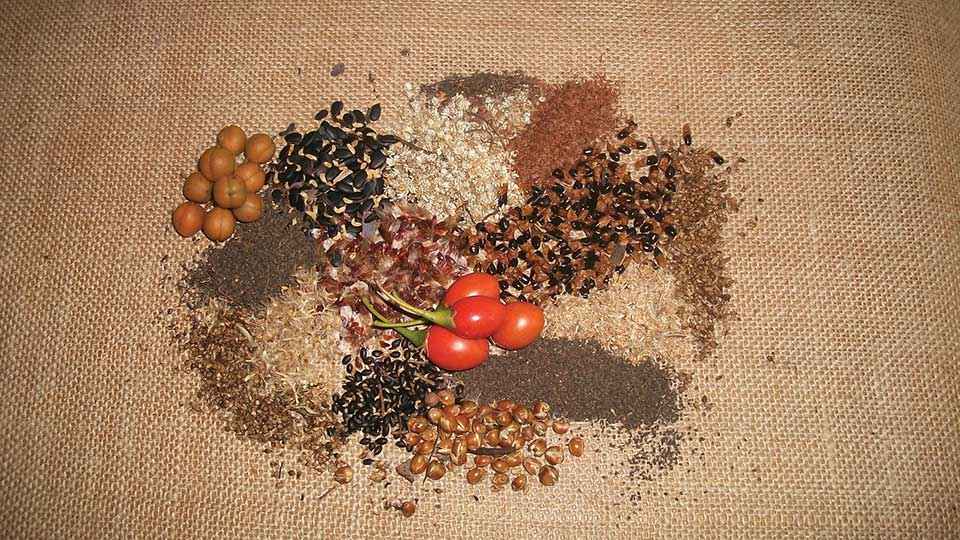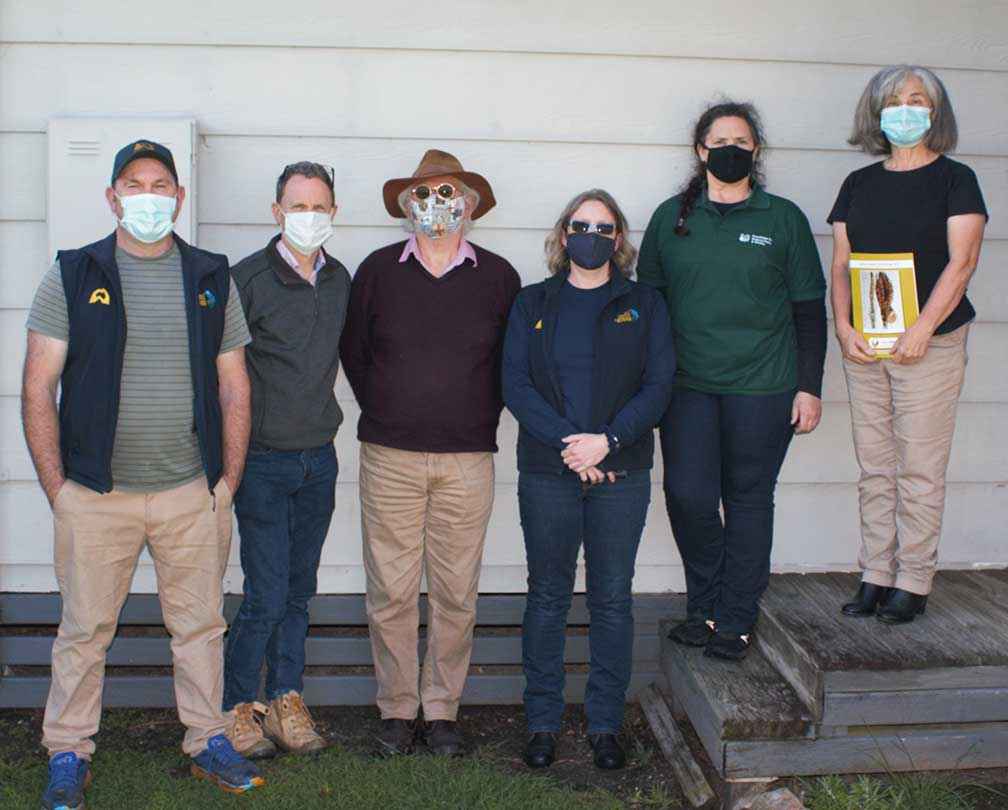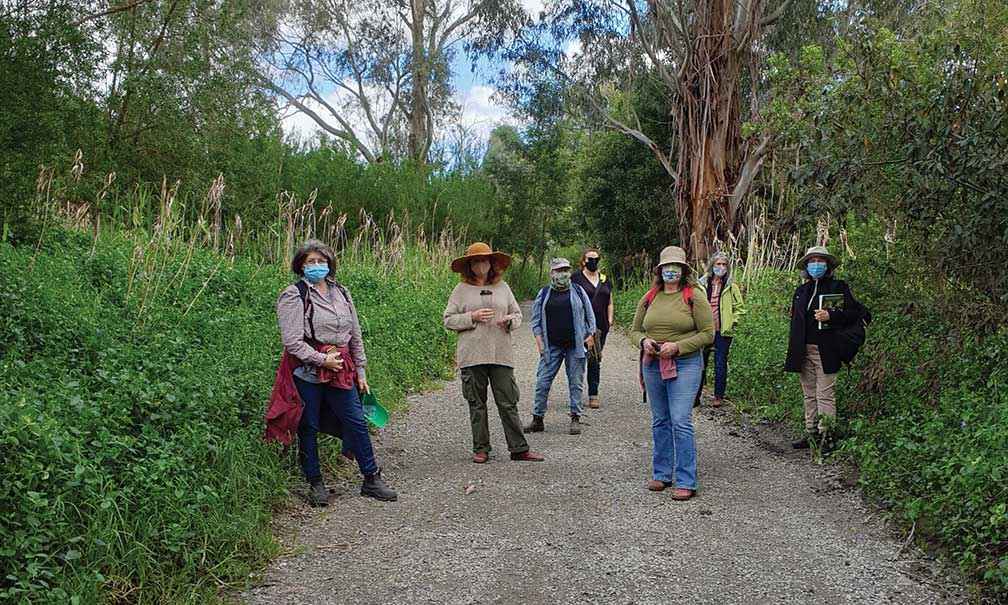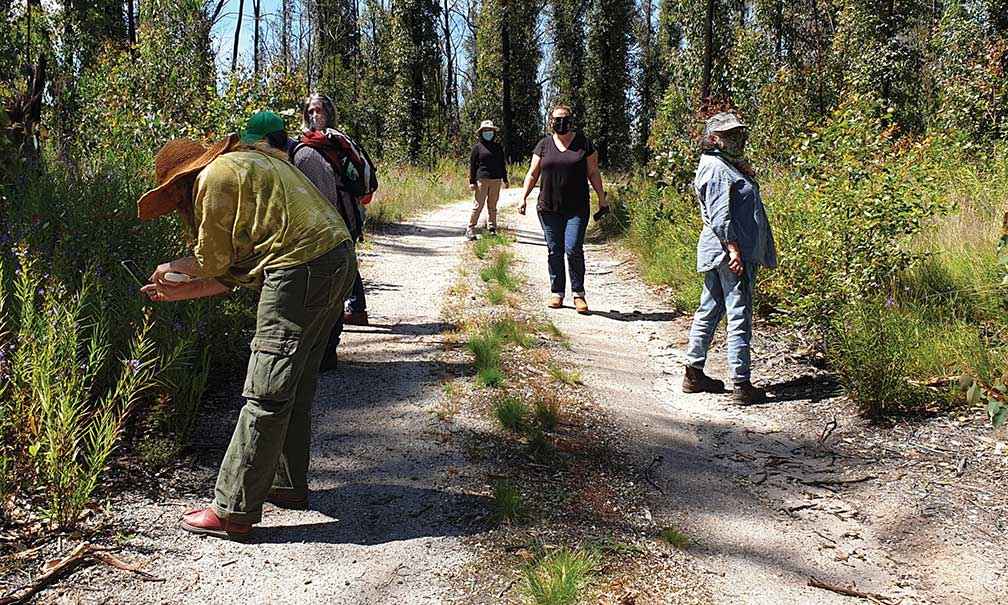Victorian Landcare Magazine - Summer 2022 , Issue 83

The 2019-2020 black summer bushfires resulted in the tragic loss of five lives, 300 homes and an area covering almost 1.4 million hectares of our natural landscape in East Gippsland. Rare flora and fauna species, rare plant communities, critical wildlife habitat and food sources all need to be re-established. It’s a complex process and while time is critical it is important that our rush to replant quickly does not come at the expense of biodiversity and local provenance plants.
Immediately after the fires, donations started arriving, grant funding became available and there were lots of offers of seedlings from students, volunteer groups and corporations from all over the state. Unfortunately, a lack of knowledge about the importance of local provenance seed and restoring the diversity of species meant that many of the wrong seedlings were being dispersed. The seedlings were mainly eucalypts, wattles, and tea-trees – all of which have adapted to fire and restore themselves without needing any help. These species will also burn faster in future fires, so caution is needed when growing them for large-scale restoration work.
Local plant communities have evolved through the process of natural selection. This means the healthiest, strongest plants that are best adapted to local soil, rainfall and climatic conditions reach maturity. These are the plants that we need to collect seed from for local restoration. It is also worth considering climate change and planning for the predicted future climate of the area when planning revegetation. This could mean mixing local provenance with the same species from locations with a similar climate to that predicted for the revegetation area.
Ignoring provenance when growing seedlings means you risk planting a seedling adapted to coastal conditions into a high-country project site and vice versa.
The species name may be the same, but there are sub-species to consider as well.
Manna gum is a good example. On the East Gippsland coast they grow to 10 metres; drive inland an hour and they are around 25 metres; further inland they grow to 40 metres and have been known to reach 90 metres in Tasmania. Unknown provenance manna gum may survive in a bushfire regeneration site for a time, but often the seed sourcing, growing, planting and guarding is wasted because the coastal seedling can’t cope with the inland frost.
Government funding cycles are an additional challenge for revegetation. Project funding is confirmed in spring, with a planting deadline in autumn. This limits plant selection to what can be grown in those five to six months, with a resultant loss in diversity. The only seed that can be collected in spring are species with woody capsules which hold seed all year.
When volunteers are growing plants for donations it is important to communicate the need for a diverse mix that includes species that suppress rather than assist fire. When landscape restoration has a six-month timeline, it can be difficult to collect the right seed at the right time. This can result in swapping out the important fire-retardant species for the easier-to-obtain and grow species that burn readily. A poor long-term decision.
In April 2021 the Foundation for National Parks & Wildlife (FNPW) reached out to the East Gippsland Landcare Network (EGLN) about establishing a seed bank for the future project to meet the needs of bushfire recovery.
Operating for more than 50 years, FNPW is the trusted charity partner of Australia’s National Parks. The non-government organisation funds conservation projects across Australia to safeguard wilderness and wildlife for future generations.
EGLN saw the FNPW approach as an opportunity to meet the region’s longer-term restoration needs. FNPW is supporting the establishment of a central seedbank, funding community nursery set-ups, seed collection training workshops and ongoing seed collection days.

Above: East Gippsland Central Seedbank collaborators Matt Stephenson, Geoff Trease, Phil Horner, Caroline McGuinn, Trudiann Dale and Vicki Leris.
The workshops will include safety, permits, ethical and sustainable collection practices, species identification, collecting, cleaning, labelling and preparing seed for storage. Common and protected species will be collected as per permit requirements and parent stock will be grown in ground or in pots. Seed collection trainees will be encouraged to add rarer species to wildlife corridors and shelterbelts on their land, so that in the future these living seedbanks reduce seed collection from the wild.
Although the seedbank infrastructure becomes the property of the EGLN, anyone who is interested can participate in seed collection or volunteering their time at a community nursery.

Above: A field identification day on unburnt Bruthen walking trails in the morning.
COVID-19 restrictions have delayed progress, but online seed collection workshops have been run in some communities and field training in plant identification and marking future collection sites are underway.

Above: A field identification day at the burnt Clifton Creek in the afternoon.
Restoration of rare plants and biodiversity after large scale loss is a challenging task at the best of times. The science says we will be experiencing more frequent and more severe weather events in the future. The East Gippsland community is very grateful to FNPW and EGLN and is looking forward to the community engagement these initiatives will create, as well as the significant improvement for local biodiversity.
Vicki Leris is a member of the Nicholson River Landcare Group. She has been growing indigenous, threatened, and protected plants for more than 20 years though her Wildseed Nursery in Gippsland.
For more information email wildseed.office@gmail.com
For more information about planning for climate adaptation in revegetation see: https://www.environment.vic.gov.au/__data/assets/pdf_file/0036/489159/Revegetation-plant-provenance-information-sheet_final.pdf